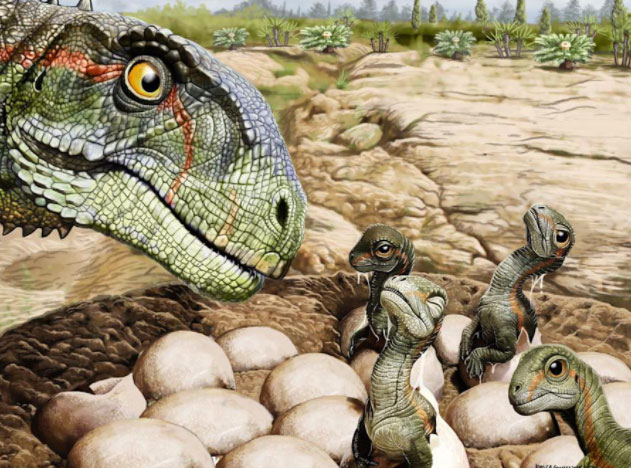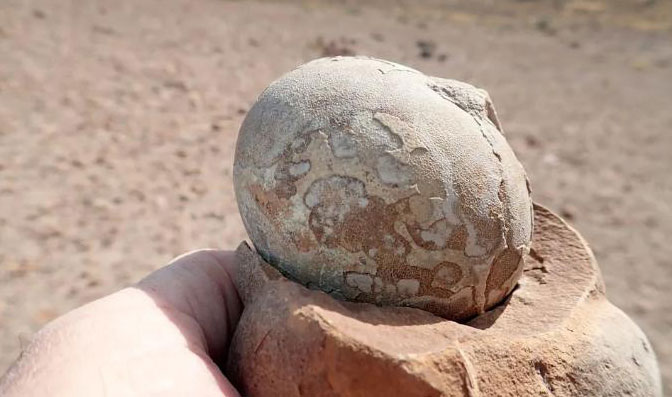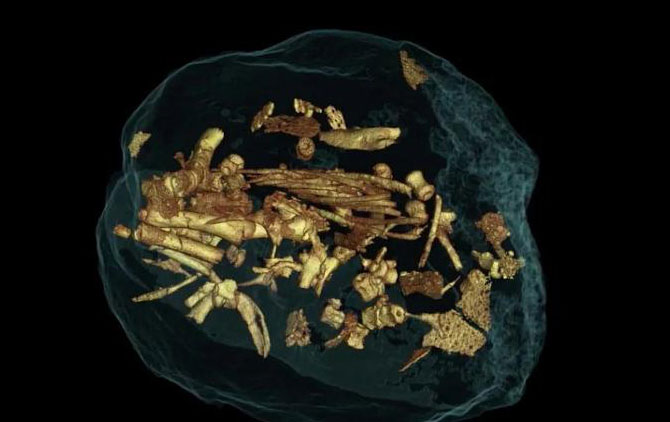Paleontologists have discovered 100 eggs and 80 skeletons of a dinosaur known as Mussaurus at a site where they once lived in the ancient highlands of Patagonia, Argentina.
The dinosaur nesting site is dated to 193 million years old and represents the earliest evidence of a dinosaur herd.

Graphic depiction of dinosaur nests – (Photo: INSIDER).
Many of the dinosaur eggs still contain embryos, and they were found clustered together in groups ranging from 8 to 30 eggs.
Scientists also found skeletons of Mussaurus that were of the same size and age buried in one location. These specimens provide evidence that these dinosaurs lived in herds.
“I came to this site aiming to find at least one nice dinosaur skeleton. We completed the search with 80 skeletons and over 100 eggs,” said researcher Diego Pol from the Egidio Feruglio Paleontological Museum in Patagonia and the lead author of the study on this dinosaur, in an interview with Insider.

Fossilized egg over 190 million years old – (Photo: INSIDER)
Previously, scientists believed this type of dinosaur lived during the late Triassic period, approximately 221 to 205 million years ago.
However, the new findings indicate that Mussaurus thrived in the early Jurassic period. This provides evidence that the ancestors of Mussaurus survived the mass extinction event that occurred 200 million years ago.

X-ray image showing the embryo inside the egg – (Photo: European Synchrotron)
Argentinian paleontologists first discovered a Mussaurus skeleton at this Patagonia site in the late 1970s.
The dinosaurs they found were no longer than 15 cm. They did not realize these were “newborn” dinosaurs. Consequently, researchers named this creature “mouse lizard” due to the tiny size of the skeletons.
Researcher Pol decided to revisit this area in 2002 and found the first adult Mussaurus fossils there.
These bone fragments revealed the “adult version” of the “mouse lizards”, which were nearly the size of a modern hippopotamus. They weighed about 1.5 tons and measured approximately 8 meters from snout to tail.


















































